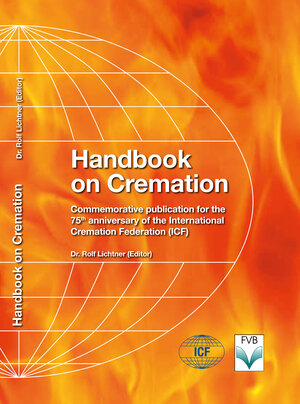
×
![Buchcover ISBN 9783936057355]()
Bestatter, Krematorien, Kremationstechnicker, Studenten, Krematorium, Cremation, Friedhöfe, Funeral Home, Funeral
Handbook on Cremation
herausgegeben von Rolf LichtnerThe International Cremation Federation (ICF) is celebrating its 75th anniversary in 2012. This is reason enough – but not the only one – to publish the Handbook on Cremation. The handbook will include articles from authors from around the world, who are experts in the funeral and cremation business.
The book will describe the different aspects, which we believe are important for cremation. The history of cremation is described by Todd van Beck, complimented by an article from Roger Arber about the development of cremation and statistical global cremation data and a description of the International Cremation Federation and its goals by the Secretary General of the ICF, Henry J. Keizer.
The ethical aspects of cremation dominate the contributions of Professor Davies about ethical foundations of cremations in the religions; Jan Gabriels, MD, is the author of the legal and ethical aspects the use of metals after cremation; Shoji Eguchi contribution gives a detailed description of the cremation in Japan; and the planning and operational aspects for crematory are summarized by Peter McLean.
Eight detailed contributions cover the technological aspects in a crematorium. Designs for furnace constructions (Dr. Gebhard Schetter, Dieter Zahn), designs for filter technology (Ole Petzoldt), emissions and emission control (Benjamin Wiechmann/Markus Gleis), developments in filter techniques for crematoria and saving energy and sustainable development by Andrew Mallalieu, measuring and control technology for emission control (Bruno Vater) and sanitary requirements at crematories (Dr. Gabriele Righi) provide an broad and extensive overview of today’s technology.
The fourth part of the book is entitled “Standards and Qualifications”. There are articles about the standardization for crematories by Peter Plegnière, quality assurance for crematories by Svend-Jörk Sobolewski, professional formation and development concepts for crematory employees by Duncan McCallum, requirements on the future crematory from a customer´s viewpoint by Todd van Beck, as well as educational aspects – now and in the future – by Dr. Rolf Lichtner, who is also editor of the book.
The book will describe the different aspects, which we believe are important for cremation. The history of cremation is described by Todd van Beck, complimented by an article from Roger Arber about the development of cremation and statistical global cremation data and a description of the International Cremation Federation and its goals by the Secretary General of the ICF, Henry J. Keizer.
The ethical aspects of cremation dominate the contributions of Professor Davies about ethical foundations of cremations in the religions; Jan Gabriels, MD, is the author of the legal and ethical aspects the use of metals after cremation; Shoji Eguchi contribution gives a detailed description of the cremation in Japan; and the planning and operational aspects for crematory are summarized by Peter McLean.
Eight detailed contributions cover the technological aspects in a crematorium. Designs for furnace constructions (Dr. Gebhard Schetter, Dieter Zahn), designs for filter technology (Ole Petzoldt), emissions and emission control (Benjamin Wiechmann/Markus Gleis), developments in filter techniques for crematoria and saving energy and sustainable development by Andrew Mallalieu, measuring and control technology for emission control (Bruno Vater) and sanitary requirements at crematories (Dr. Gabriele Righi) provide an broad and extensive overview of today’s technology.
The fourth part of the book is entitled “Standards and Qualifications”. There are articles about the standardization for crematories by Peter Plegnière, quality assurance for crematories by Svend-Jörk Sobolewski, professional formation and development concepts for crematory employees by Duncan McCallum, requirements on the future crematory from a customer´s viewpoint by Todd van Beck, as well as educational aspects – now and in the future – by Dr. Rolf Lichtner, who is also editor of the book.


